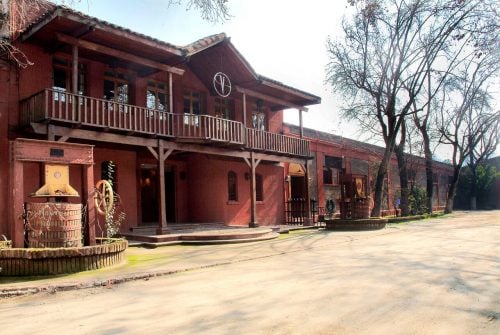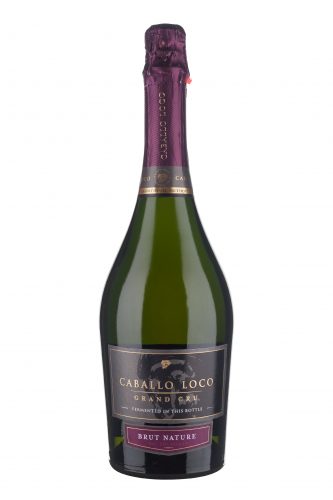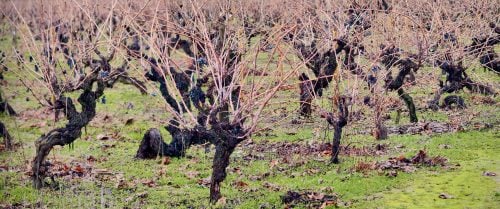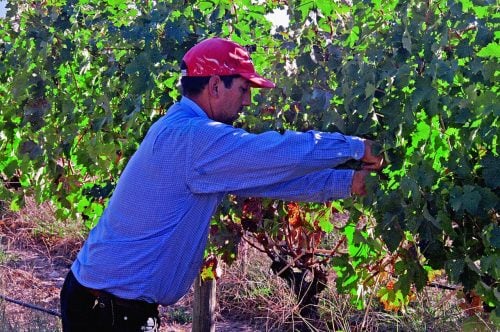Valdivieso is a household name in Chile, although it will not be familiar to many Eastern Canada residents. Let's hope that will soon change.
Being the oldest producer of sparkling wines in Chile, Valdivieso is synonymous with sparkling wine in Chile. If you were to simply order 'a Valdivieso' in Chile you would most likely receive a glass of bubbly. That despite the fact that since the early 1980s Valdivieso has expanded their focus to include still wines and now boasts the most varied portfolio in South America.
Valdivieso brand produces signature sparklings, still varietals and blends. Their premium wines are marketed under the Caballo Loco label.
Valdivieso has penetrated their domestic market as well as European and Asian markets. Western Canada has a bit more availability of Valdivieso products. Ontarians will get a chance to sample Valdivieso's wares when 2 of their sparkling wines will be available through Vintages in March and April of 2019.
Winery Fun Facts
Valdivieso was founded in 1879, when Don Alberto Valdivieso, bonvivant and champagne lover, founded Champagne Valdivieso, the first producer of sparkling wines in Chile and South America. Rumour has it Don Alberto once imported copious quantities of champagne and entertainment from France, including can can dancers, to Chile for one of his birthday celebrations. You gotta love a guy like that!
There are 2 wine making facilities in Chile. Sparkling wines are still produced in the original winery in Santiago with a capacity to produce 6.5 million litres in the traditional method. The second location where all other wines are produced is 200 kilometers south of Santiago and has capacity to produce 11 million liters.
The Wines
I had the pleasure of being led through a wine tasting by Luciano Fiori, North American Sales Director and Joy MacDonald of Canadian Sales and Marketing.
Luciano's enthusiasm for the wines, his pride in the quality of the vines and production was evident from the beginning and grew as he spoke.
Sparkling
Valdivieso utilizes both the Charmat method and traditional method.
In general terms:
- Charmat method uses tanks for the first and second fermentation. Filtration and dosage (the addition of sugar and must) all happen in the tanks, without aging, prior to bottling.
- Traditional method uses vessels to create the initial still wine called the cuvée, but the transformation from still to sparkling takes place entirely in the bottle. Sugar and yeast are added to the cuvée just before bottling. The second fermentation takes place inside the bottle, creating Co2 (or the bubbles). The yeast dies during the process. The bottles are then aged 'on the lees' (ie with the dead yeast and particles left over from fermentation) anywhere from 9 months for Spanish Cavas to 3 years for Vintage Champagne. The time on the lees lends texture and complexity to the wine. 'Filtration' or clarification takes place as the bottles are turned upside down and 'riddled' (turned slightly on a regular basis) so the dead yeast cells accumulate in the neck of the bottle. The bottles are then turned upside down in freezing liquid so the lees solidify in the neck of the bottle. The temporary bottle cap is released and the lees are 'disgorged' as the pressurized bottle shoots out the plug. Then each bottle receives a 'dosage' (addition of sugar) before bottles are corked, wired and labelled. Note: some 'Nature' sparklings omit the the 'dosage'.
The March 2019 Vintages Release includes one Charmat Sparkling:
The Valdivieso Brut Sparkling Rosé, Charmat method retails for $14.95. It is 70% Pinot Noir and 30% Chardonnay. Bright pink, light to medium weight, off dry with a strawberry effervescence. It has a nice balance of fruit and acidity. This is a fun unassuming sparkling, easy to sip with an interesting burst of Pinot Noir on the finish. Perfect for parties, picnics, brunches.
Scheduled for Vintages release April 2019:
The Caballo Loco Gran Cru Brut Nature, Traditional method, is 50% Chardonnay sourced from the Leyda Valley and 50% Pinot Noir sourced from Bio Bio Valley. It spent 18 month on the lees and a further 6 months in bottle and will retail will be in the $44 range. No dosage.
It has a lovely lemony, gold hue in the glass and very fine, foamy mousse. Lots of autolytics on the nose along with hints of apples and pears. Beautifully balanced, it is very lively on the tongue without overt acidity. Lots of yeasty, toasty notes and a hint of gingery spice on the delightful lingering finish.
Still Wines
Another note worthy offering is the 2015 Sauvignon Blanc. While not yet scheduled for a Vintages release, if you see this on a restaurant wine list snap it up if you are leaning to a Sauvignon Blanc. 100% Sauvignon Blanc sourced from the Leyda Valley, this has a beautiful herbaceous nose of lemongrass, grapefruit and cat pee (in the best possible way!) Those same notes carry over to the palate accentuated by a taut salinity. This wine is smooth and well integrated. It would be not out of place in a lineup of of New Zealand's premium Sauvignon Blancs.
We can only hope that this one eventually makes it way to the LCBO shelves in Ontario!
Éclat Vigno 2010 is a blend of 86% Carignan and 14% Mourvedre. Carignan can be a difficult grape -old-vine Carignan grapes, fully ripened on infertile soils in a warm summer, produce by far the best Carignan wine. In the absence of any national, industry parameters regarding quality a group of Chilean producers took it upon themselves to define and market the 'Vigno' designation. In the hopes of differentiating their wines from bulk producers, the Vigno designation requires Carignan grapes to be sourced from old vines, dry farmed in Maule Valley. The Éclat is from 70 year old vines and as spent 12 months on French oak.
The inky Éclat Vigno 2010 has a pleasing nose with lots of tobacco and smoke. It opens up to offer some floral, violet notes. It is surprisingly easy on the palate, medium weight with fine, soft tannins. Medium finish with a slight green-ness.
Caballo Loco Label
There is a focus on the using the best varietals from the best vineyard for each growing season. This is the key to some of the Caballo Loco iconic blends.
Valdivieso sources grapes from Limari, Casablanca, Leyda, Lontue, Maipo, Apata, Colchagua, Curico, Maule, Bio Bio and Itato Valleys. Great care is taken in hand selection and picking of grapes. Bunches are gently destemmed and sometimes in the case of Caballo Loco, hand destemmed. During fermentation the skins are gently stirred by hand.
The signature Caballo Loco, as a blend, does not display a vintage. Rather each release is given a number. The Caballo Loco No. 16 was released January 2018 and No. 17 has just hit the market.
Recent releases have scored consistently in the mid 90s range across Europe, North and South America. The retail range on this line runs $70-$80 US.
The wine making approach is somewhat unique in that it is based on the solera system, most often associated with sherry production. Each year the best grapes from the best vineyards from the best areas of Chile are used in that year's blend. At the end of the barrel maturation the current vintage is blended with the previous edition. This creates the new edition, of which 50% is bottled and the other 50% is returned to the barrel to continue aging.
The blend is dynamic but the wine retains its character through the blending with the previous edition. Based on the reviews and retail price it commands they are surely doing something right!
Aficionados seem to delight in cellaring editions and comparing them in a vertical tasting.
The Gran Cru Limari 2014 is 100% Syrah. It is inky with a lifted peppery nose. Medium weight if falls between an Australian Shiraz and a cool weather North American Syrah. At 15% alcohol it is a bit hot on the nose. Still a bit tight it eventually offered up aromas of black fruit, cherry and black berry. Nicely structured with fine tannins and a very pleasant, long, spicy finish.
Let's hope that the future holds more availability of premium Chilean wines such as these!






Leave a Reply